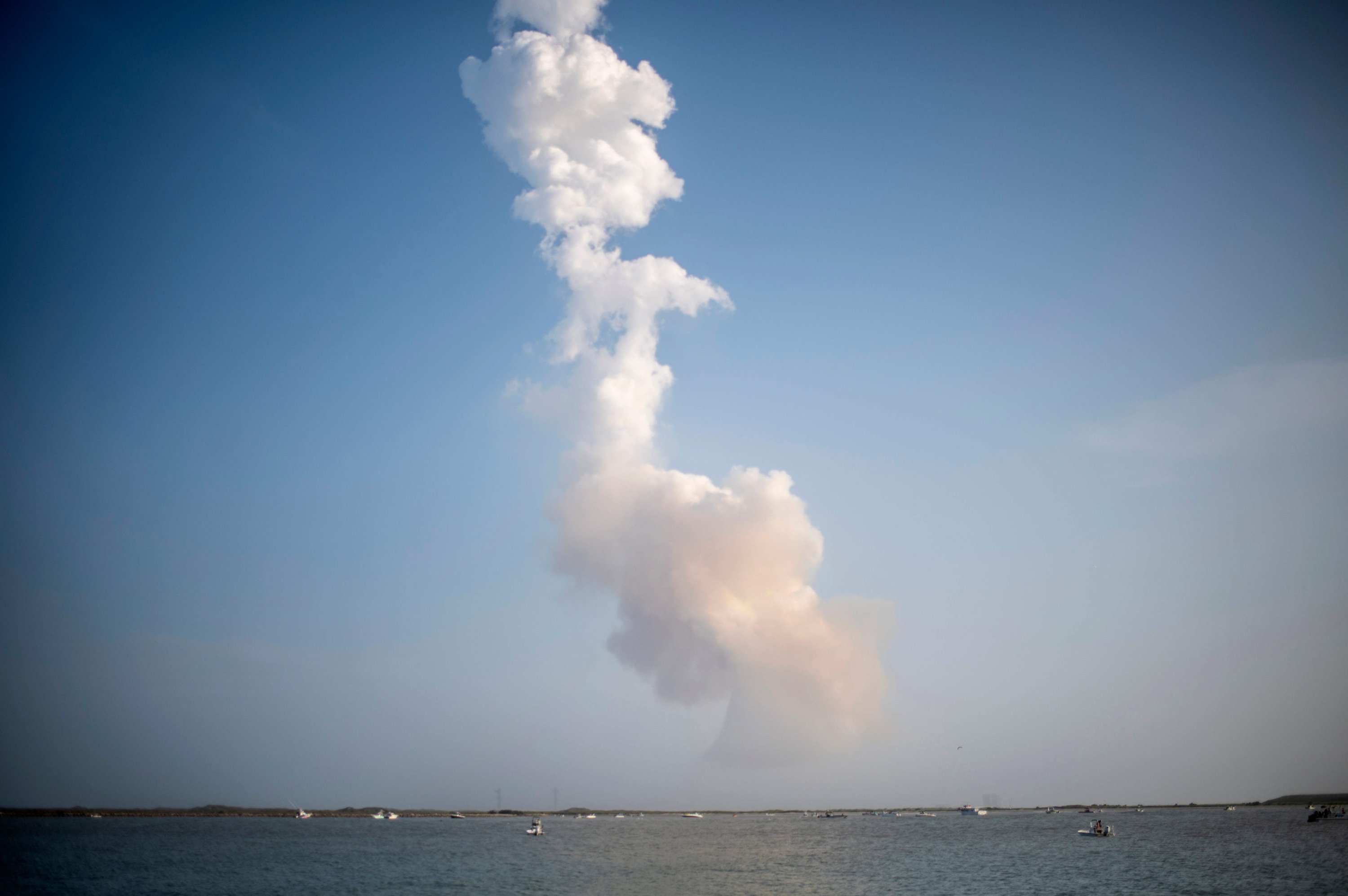© Turkuvaz Haberleşme ve Yayıncılık 2025
After back-to-back explosions, SpaceX launched its mega rocket Starship again on Tuesday evening, but fell short of achieving some of its most important testing goals when the spacecraft tumbled out of control and broke apart, adding fresh engineering hurdles to CEO Elon Musk's increasingly turbulent Mars rocket program.
The 403-foot (123-meter) rocket, the core of Musk's goal of sending humans to Mars, blasted off on its ninth demo from Starbase, SpaceX’s launch site at the southern tip of Texas, which residents voted this month to organize as an official city.
Musk's SpaceX hoped to release a series of mock satellites following liftoff, but that got nixed because the door failed to open all the way.
The spacecraft flew beyond the point of two previous explosive attempts earlier this year that sent debris streaking over Caribbean islands and forced dozens of airliners to divert course, before it began spinning as it skimmed space toward an uncontrolled landing in the Indian Ocean.
SpaceX later confirmed that the spacecraft experienced "a rapid unscheduled disassembly,” or burst apart. "Teams will continue to review data and work toward our next flight test,” the company said in an online statement.
Musk noted in a post on the social media platform X that it was a "big improvement” from the two previous demos, which ended in flaming debris over the Atlantic. Despite the latest setback, he promised a faster launch pace moving forward, with a Starship soaring every three to four weeks for the next three flights.
It was the first time one of Musk's Starships – intended for moon and Mars travel – flew with a recycled booster. There were no plans to catch the booster with giant chopsticks back at the launch pad, with the company instead pushing it to its limits. Contact with the booster was lost at one point, and it slammed into the Gulf of Mexico in pieces as the spacecraft continued toward the Indian Ocean.
Then the spacecraft went out of control, apparently due to fuel leaks.
"Not looking great with a lot of our on-orbit objectives for today,” said SpaceX flight commentator Dan Huot. The company had been looking to test the spacecraft’s heat shield during a controlled reentry.
Communication ceased before the spacecraft came down, and SpaceX ended its webcast soon afterward.
The previous two Starships never made it past the Caribbean. The demos earlier this year ended just minutes after liftoff, raining wreckage into the ocean. No injuries or serious damage were reported, although airline travel was disrupted.
Besides taking corrective action and making upgrades, SpaceX modified the latest spacecraft’s thermal tiles and installed special catch fittings. This one was meant to sink in the Indian Ocean, but the company wanted to test the add-ons for capturing future versions back at the pad, just like the boosters.
The recent setbacks indicate SpaceX is struggling to overcome a complicated chapter of Starship's multibillion-dollar development. But the company's engineering culture, widely considered more risk-tolerant than many of the aerospace industry's more established players, is built on a flight-testing strategy that pushes spacecraft to the point of failure, then fine-tunes improvements through frequent repetition.

Starship's planned trajectory for Tuesday included a nearly full orbit around Earth for a controlled splashdown in the Indian Ocean to test new designs of its heat shield tiles and revised flaps for steering its blazing reentry and descent through Earth's atmosphere.
But its early demise, appearing as a fireball streaking eastward through the night sky over southern Africa, puts another pause in Musk's speedy development goals for a rocket bound to play a central role in the U.S. space program.
NASA needs SpaceX to make major strides over the next year with Starship – the biggest and most powerful rocket ever built – in order to land astronauts back on the moon. Next year’s moonshot with four astronauts will fly around the moon, but will not land. That will happen in 2027 at the earliest and require a Starship to get two astronauts from lunar orbit to the surface and back off again.
Federal regulators had granted SpaceX a license for Starship's latest flight attempt four days ago, capping a mishap investigation that had grounded Starship for nearly two months.
The last two test flights – in January and March – were cut short moments after liftoff as the vehicles blew to pieces on ascent, raining debris over parts of the Caribbean and disrupting scores of commercial airline flights in the region.
The Federal Aviation Administration (FAA) expanded debris hazard zones around the ascent path for Tuesday's launch and pushed the liftoff outside peak air travel times.
The previous back-to-back failures occurred in early test-flight phases that SpaceX had easily achieved before, in a striking setback to a program that Musk, the billionaire entrepreneur who founded the rocket company in 2002, had sought to accelerate this year.
Musk, the world's wealthiest individual and a key supporter of U.S. President Donald Trump, was especially eager for success after vowing in recent days to refocus his attention on his various business ventures, including SpaceX, following a tumultuous foray into national politics and his attempts at cutting government bureaucracy.
Closer to home, Musk also sees Starship as eventually replacing the SpaceX Falcon 9 rocket as the workhorse in the company's commercial launch business, which already lofts most of the world's satellites and other payloads to low-Earth orbit.
